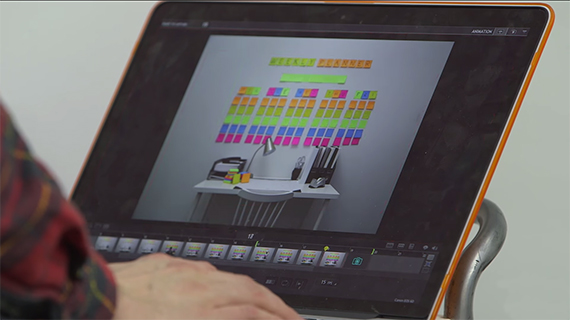Stop motion is typically considered an animation technique. It involves physically manipulating your subject for each picture, so the object, idea, or person appears to move. While this technique has been used to create movies like The Nightmare Before Christmas, James and the Giant Peach, and Rudolph the Red-Nosed Reindeer, it is also used for commercials, short films, and social media). To understand a little more about how stop motion photography works, Meagan Cignoli created this helpful video:

The process of stop motion photography is kind of like watching paint dry. It takes time, patience, and passion, but in the end the results are worth the effort. Typically stop motion is used in 6 or 15 second videos. However, those brief 15 seconds take around 14 hours to create and use roughly 250 photographs.

Cignoli uses DragonFrame software to view frame-by-frame sequencing during the shoot.
Challenges are never ending in stop motion photography, and essentially you can have something happen every second. For instance, during a shoot you may realize the angle is unflattering to your subject, or you may find something else off within the image; and then you have to start over again from the beginning to capture your corrections in the new photographs.

Stop motion uses micro-movements to create motion through photographs.
To check their work, Cignoli and her team use Dragonframe to ensure their images are exactly the way they want them to appear. Each person on the team specializes in a different area. Cignoli for instance, prefers working with people. These shoots tend to take less time than working with objects to capture, because the subject is able to control their movements.

Photo shoots typically take around 14 hours to complete.
When starting a stop motion project, think about the photograph and what the story is behind it. From there you have to visualize how you want to make it move and ways to make those movements interesting. Whether you’re the subject or the photographer, it’s important to understand micro-direction. You have about 250 photographs to capture and therefore 250 decisions to make to create your vision.
Like This Article?
Don't Miss The Next One!
Join over 100,000 photographers of all experience levels who receive our free photography tips and articles to stay current:






Leave a Reply